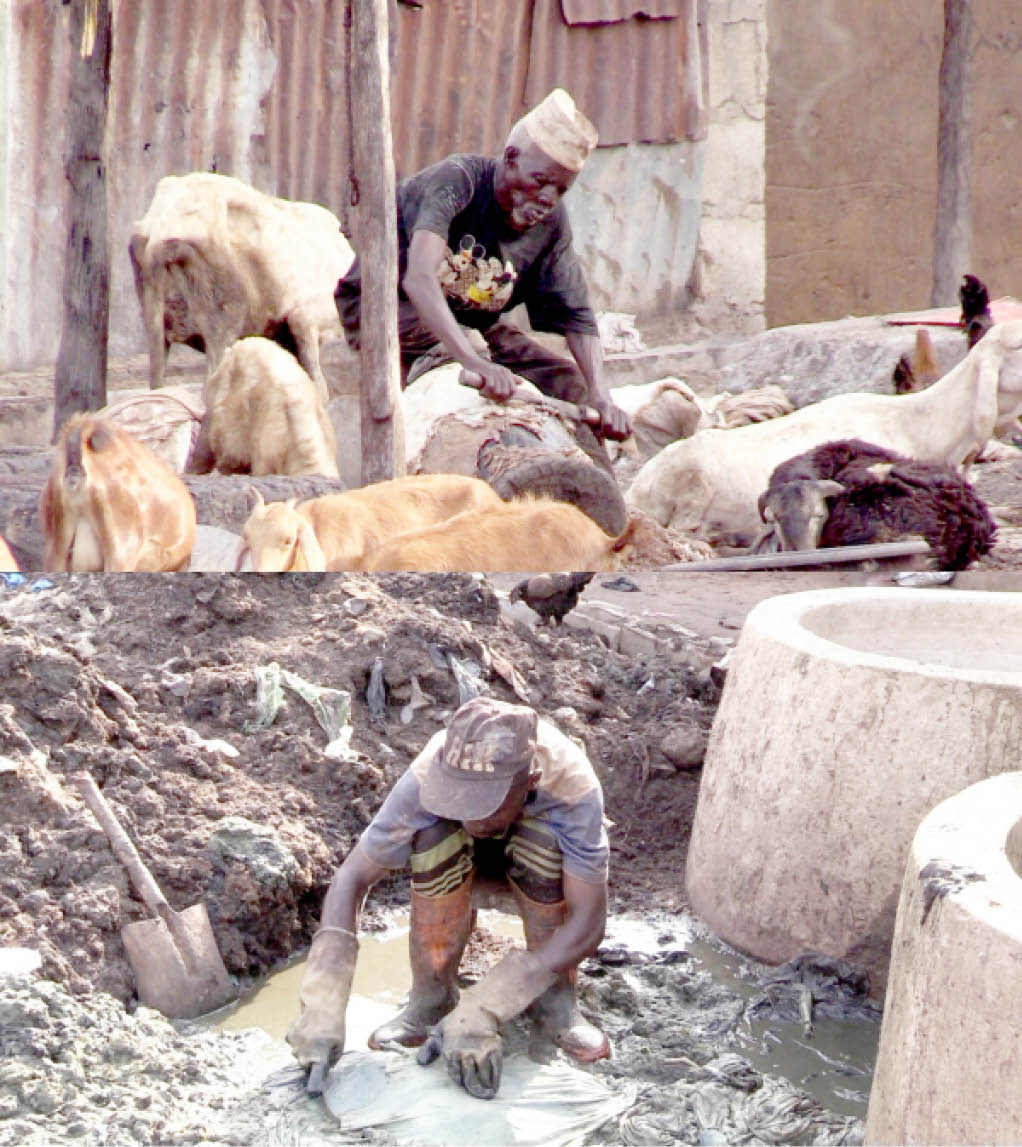Kano tannery operators raise concern over extinction threat
Decades ago, operators of tannery in Kano were regarded as successful businessmen as they usually lived in wealth. You dared not join financial issues with them. They were also regarded as custodians of societal heritage worth preserving. In the ancient city of Kano, there were several places known for tannery practices, which is called majema […]

Activities at Kofar Wambai Artisan Tannery in Kano
Decades ago, operators of tannery in Kano were regarded as successful businessmen as they usually lived in wealth. You dared not join financial issues with them.
They were also regarded as custodians of societal heritage worth preserving. In the ancient city of Kano, there were several places known for tannery practices, which is called majema in local dialect. Unfortunately, these places have all disappeared, except the historical Kofar Wambai tannery established over 9 decades ago.
It is on record that one of the major sectors that Kano State excelled in was hide and skin. Unfortunately, the art of tanning is going into extinction.
However, despite all the challenges posed by modern innovation in the business of tanning, Kofar Wambai has been sustained and maintained till date, although with minimal tempo. But a visit to the site will no doubt send a message to the visitor that the business is gradually dying despite its long time existing history. First to be noticed is the lack of access road.
FG moves to review Algeria/Nigeria air service agreement
FG urged to partner private sector to reverse medical tourism
For decades, the place has served as an avenue where the young and old make a living through the art of tanning; and professionals display their skills and versatility in making various colours of finished leathers from hides and skin of different animals.
Malam Hudu Nasiru, who was in the tanning business for over three decades before leaving it for another business, said the presence of modern tannery across the state relegated local skills, making them less important and attractive. He added that most operators could not afford to buy modern hides and skin. He further explained that local tanners were forced to make use of the little available rejected hides and skin left behind by big tanners, just to enable them remain afloat.

Similarly, Malam Hudu also attributed the rise in the consumption of hides from cattle as ‘ponmo’ a local term for edible hide, as one of the major challenges that affect the availability of hides and skin.
“Few years ago, it was estimated that annually, nearly 7 million cattle in Nigeria were slaughtered and consumed. Over 11 million goats and sheep were also slaughtered and consumed annually. That was why many of us couldn’t withstand the competition with modern tannery companies; we were forced to quit the business because hide and skin became scarce and unaffordable,” he said.
A retired tanner, Alhaji Bashir Arzai, said local tanners could not withstand the present competition created by modern tannery companies. According to him, even at the peak of hide and skin collection periods, only modern tannery gives a price line. He added that instead of continuing with the business, many local tanners resolved to serve modern tanneries by supplying them with raw hide and skin.
“The slaughtering peaks are usually during Sallah festivals; and it is these modern tanneries that set the price margin. That is why many local tanners have now become hide and skin merchants for the companies because the competition is far above their power,” he said.
The chairman of the Kofar Wambai Tannery Custodians Association, under the auspices of Kofar Wambai Multipurpose Cooperative Society, Malam Mustapha Umar, said modernity forced operators to adopt some measures to sustain the business despite inheriting the art from their parents, who also inherited it from their forefathers. He revealed that their operation was still based on some traditional practices, coupled with the use of some modern chemicals in their tanning activities.
He added that over the years, tanning business suffered a serious setback due to the inability of operators to withstand competition due to lack of capital.
He also revealed that due to the challenges, local tanners resorted to tanning wild animals’ skins for luxury leather works, adding that they usually work with the skin of wild animals like lion, python, snake, crocodile, among others. This, he said, had been sustaining their business.
Asked where they take their finished wild animal leather to, he said, “We operate with some agents that serve as middlemen. Our locally made leather is usually taken to Europe and Middle East countries. We are still in this business because this is what we inherited from our parents. But to be honest with you, the economic situation in the country is not helping us. As you can see, people are leaving the business.”
A business analyst in the state, Ibraheem Umar, said although tannery operators had been trying to move with modernity, there’s need for them to do more, not only in operational strategies but also in their marketing methodologies so that they would remain afloat. He also said there was the need for effective preservation of the art to avoid being extinct.
“If properly managed, this profession can be preserved and upgraded to a state-of-the-art level. It is a form of identity to these people; therefore, it should be preserved to avoid extinction.
“If effectively managed and guarded to a certain level, this business can fetch huge foreign exchange, not only for Kano State but the country in general,” he said.
